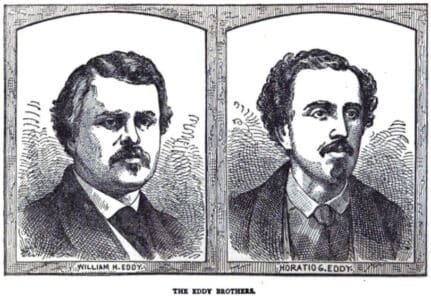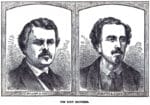- Introduction
- The origins of the primeval code
- Scientific foundations and principles
- Practical applications of the primeval code
- Comparison of genetic manipulation and organic farming
- Future prospects and challenges
- Conclusion and outlook
1. introduction
The primeval code, as described in Luc Bürgin's book, announces a groundbreaking discovery in the Agriculturethat has the potential to germinate seeds and to Germination capacity in a way that was previously unimagined. Scientists at Ciba-Geigy discovered that the exposure of Seeds and fish eggs compared to an electrostatic field, a considerable increase in Growth and yield could be achieved. Surprisingly, even extinct old species began to grow again, opening the door to a completely new era in agriculture [1]. As an ecological alternative to the controversially discussed Genetic engineeringthe primeval code stands out as a pioneer for innovative approaches in the agricultural world [2].
These findings around the Primordial Code - supplemented by the latest research in an updated edition of the book - offer a fascinating perspective on the energetic influence of germination and expand our understanding of germinable seeds. The practical applications of the primordial code could not only change the way we grow plants, but also represent a significant step towards sustainable and ecologically conscious farming. In the following sections of this article, we turn to the scientific basis, practical applications and a comparison with genetic engineering and organic farming to explore the full potential of the primordial code [1][2].
2. the origins of the primeval code
The discovery and development of the Urzeit code can be traced back to the 1980s, when Dr. Guido Ebener and Heinz Schürch, two scientists at Ciba-Geigy (now Novartis), carried out crucial research. Their studies focused on the effects of strong electrostatic fields on organisms, particularly seeds and fish eggs [7][8].
- The main players:
- Guido Ebener and Heinz SchürchThe pioneers behind the discovery of the primeval code. They worked at Ciba-Geigy and carried out the groundbreaking experiments that led to the discovery of the primeval code [7].
- MinoTechThe company that today holds the patents for this technology. Proof of the commercial and scientific interest that this discovery aroused [8].
- Daniel EbnerGuido Ebner's son, who continues his father's research and founded the Guido Ebner Institute to promote the use and dissemination of the Prehistoric Code [7].
- Important milestones:
- 1987Ebner and Schürch discover the primeval code and apply for a patent for a new fish farming process [7].
- 1989A patent is applied for, which forms the basis for the commercial use of this technology [7].
- Subsequent yearsDaniel Ebner is committed to the further development and dissemination of the primeval code and founds the Guido Ebner Institute [7].
The discovery of the primeval code and the subsequent patents laid the foundation for a potentially revolutionary method in agriculture and animal breeding. By exposing seeds and fish eggs to electrostatic fields, amazing results have been achieved, including increased yield and resistance to pests. This method offers a cost-effective and environmentally friendly alternative to conventional genetic engineering and could play an important role in developing countries in particular [7][9].
3. scientific foundations and principles
Scientific foundations and principles of the primeval code
- Electrofield treatment and DNA regression
- Influence of energy and information
- The Primeval Code and similar concepts such as ElectroCulture emphasize the importance of energy and information in shaping life. Specific frequencies or energies could be used to influence biological systems, similar to the multi-frequency technologies used in ElectroCulture [11]. These approaches contradict the heat loss hypothesis, which states that NIEF (non-ionizing electromagnetic fields) only cause energy absorption and heat in the body, as it does not take into account the athermal (non-heat-related) effects of NIEF or the coherence (superposition capability) of NIEF in the body [12].
- Practical application and effects
- In the primeval code method, seeds, fish eggs or fern spores are exposed to a high-voltage electric field during germination or early development [13]. The reaction of biological material to strong electric fields influences growth rate, population composition, morphogenesis, stress resistance and fertilization rates [7]. The effects of the primeval code on plants are inconsistent and vary greatly between different plants and different electric field strengths [13]which indicates the complex nature of the interactions between electromagnetic fields and living organisms.
4. practical applications of the primeval code
Current research in Africa is using the primeval code to increase crop yields and reduce the use of fertilizers and pesticides. This shows how specific natural-physical influences can significantly improve the germination and growth of plants [8][16].
- Application of the primeval code:
- Pre-treatment of seedsCertain frequencies act on the seeds before sowing and significantly increase growth behavior. This can be achieved using simple devices such as a plasma discharge ball or an MP3 player, where the final discharge ball is exposed to the seeds for 1-5 minutes [16].
- Activation of waterWater can also be activated in pipes, resulting in improved plant growth. Each plant has its specific optimal frequencies, and it is crucial to achieve the bio-resonance of the specific plant, which depends on the size of the substrate [16].
- Application on treesWrapping tree trunks with aluminum foil promotes tree growth by stimulating cambium growth (the innermost layer of bark). This method can increase apple tree yields and reduce damage from wildlife. Aluminum foil should only be applied to tree trunks from May to October [16].
Experiments with various plants such as cress, radishes, corn, mung beans and apple trees have been conducted to demonstrate the effectiveness of the primordial code. These experiments show that exposing seeds to low-energy electromagnetic fields before sowing activates them, leading to germination after exposure to specific frequencies. Cress grown in an aluminum-wrapped box showed faster growth and developed a magnificent design [16].
The practical application of the primeval code offers an innovative method for increasing agricultural yields and reviving long-extinct animal and plant species. By using the primeval code, agriculture can take a significant step towards Sustainability and ecological responsibility [7][16].
5. comparison with genetic manipulation and organic farming
The ancient code method and traditional genetic manipulation are two fundamentally different approaches to agriculture that present both opportunities and challenges. Here is a comparison:
- Scientific recognition and research basis:
- Genetic manipulationBased on extensive scientific research and widely recognized in the scientific community. The technology is used in agriculture worldwide to make plants more resistant to pests and diseases and to increase yields.
- Prehistoric codeThe method is not based on scientific literature and has attracted attention mainly in esoteric circles, alternative magazines and some television programs [7].
- Patenting and commercial use:
- Genetic manipulationMany of the technologies and genetically modified organisms (GMOs) are patented, which has led to commercial use and distribution on a global scale. Large agricultural corporations dominate the market.
- Prehistoric codeThe use of the Urzeit code was limited by patent applications from Ciba-Geigy. This could potentially disrupt the business model of the chemical industry and partly explains the low uptake of the technology. In addition, the lack of understanding of epigenetics in 1988 played a role [18].
- Ecological and social impact:
- Genetic manipulationWhile genetic manipulation can help to increase yields and secure food production, there are concerns about the long-term ecological impact and biodiversity. The dependence of farmers on seed companies is also viewed critically.
- Prehistoric codeOffers a potentially environmentally friendly alternative that does not require genetic modification. The method could promote sustainable agriculture and help to preserve biodiversity. However, broad scientific recognition and commercial application are still pending [7][18].
In summary, the primal code is an interesting but still under-researched method that has the potential to offer a more environmentally sustainable alternative to genetic manipulation. However, the challenges in terms of scientific validation and commercial use still need to be overcome.
6 Future prospects and challenges
The future of the primal code faces a multitude of challenges and opportunities to navigate. These include:
- Ethical and legal considerations:
- The targeted manipulation of genes and interference in natural evolution raise important ethical questions [19].
- It is crucial to strike a balance between the benefits and potential risks to ensure that the technology serves the greater good [19].
- Further research is needed to fully understand and ethically apply the possibilities of the Primal Code [19].
- Potential of the primeval code:
- The possibility of curing diseases, combating hunger and adapting organisms to changing environmental conditions shows the enormous potential of the primeval code [19].
- Experiments focus on how genetic information in the code can be used to adapt organisms to new environmental conditions [19].
- Preliminary results suggest that activating this ancient code could lead to remarkable self-healing abilities [19].
- Future developments and challenges:
- The coming years will show whether this research can contribute to a better and more sustainable future for humanity [19].
- The development of artificial intelligence is a rapidly advancing field and it is important to consider the potential impact of its development [20].
- To address concerns, it is important to establish clear guidelines and regulations for the development and use of AI [20].
These points outline the complex considerations and transformative potential that the primal code holds for the future. As we move forward, we need to be aware of the ethical, legal and societal implications that come with such a disruptive technology.
7 Conclusion and outlook
Throughout this article, we have explored the potential and challenges of the ancient code, a technology that offers the possibility of making agriculture and animal husbandry more sustainable and ecological. The significant implications of this method, from increasing crop yields without genetic modification to revitalizing extinct species, mark a decisive turning point towards a more sustainable and ecological agriculture. Environmentally friendlyfuture. However, the ethical and scientific questions this raises also emphasize the need for further research and discussion.
In conclusion, the Prehistoric Code is far more than a mere alternative to controversial genetic engineering. It embodies a bridge to understanding ancient life forms and integrating them into modern science in order to change both agriculture and our relationship with nature in the long term. The future will show whether this code actually has the potential to promote an ecologically balanced and resource-efficient world. The exciting question remains as to what effects and developments await us in the future and how we as a society can use these opportunities responsibly.
References
[1] – https://www.stiftung-plantafood.de/der-urzeit-code/
[2] – https://www.pinterest.de/pin/767723067706235076/
[3] – https://en.wikipedia.org/wiki/Luc_B%C3%BCrgin
[4] – https://www.weltbild.de/artikel/buch/der-urzeit-code_33372178-1
[5] – https://www.amazon.com/Der-Urzeit-Code/dp/3776626399
[6] – https://www.amazon.com/Der-Urzeit-Code/dp/3784435874
[7] – http://rexresearch.com/ebner2/BurginDerUrzeitCode.pdf
[8] – https://gehtanders.de/urzeitcode-einfuehrung-und-patente/
[9] – https://de.metapedia.org/wiki/Der_Urzeit-Code
[10] – https://www.molevol.hhu.de/fileadmin/redaktion/Fakultaeten/Mathematisch-Naturwissenschaftliche_Fakultaet/Biologie/Institute/Molekulare_Evolution/Dokumente/Die_Zeit_18-12-2019.pdf
[11] – https://de.scribd.com/document/698080149/Elektro-PermaKultur-PRO-Systeme-1
[12] – https://bemri.org/publications/vlc-and-lifi/419-health-and-environment-friendly-mass-communication-with-photonic-networks/file
[13] – https://www.psiram.com/ge/index.php/Urzeit-Code
[14] – https://tu-dresden.de/bu/verkehr/ila/vkstrl/ressourcen/dateien/studium/Richtlinien-Vorlagen/hinweise_wiss_arbeiten.pdf
[15] – https://itp.uni-frankfurt.de/~mwagner/mcwagner.html
[16] – https://www.youtube.com/watch?v=AlKa36_hhD8
[17] – https://jax.de/blog/mit-quarkus-gegen-monolithen/
[18] – https://www.gesundheitlicheaufklaerung.de/urzeit-code-dna-reparieren/
[19] – https://afford17.de/node/180
[20] – https://publikationen.ub.uni-frankfurt.de/files/4813/zeit-fuer-zukunft.pdf
[21] – https://books.openedition.org/ksp/1926?lang=en
[22] – https://www.quarks.de/umwelt/muell/deshalb-ist-die-kreislaufwirtschaft-so-wichtig/
[23] – https://docplayer.org/46675860-.html
[24] – https://link.springer.com/content/pdf/10.1007/978-3-0348-6049-9.pdf
[25] – https://www.kla.tv/13397
[26] – https://www.litres.ru/book/reinhard-habeck/mysteriose-museumsschatze-65699641/chitat-onlayn/
[27] – https://issuu.com/blverlag/docs/sr_2019-02
















